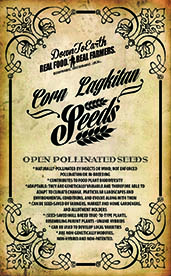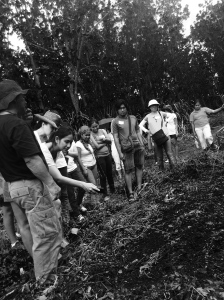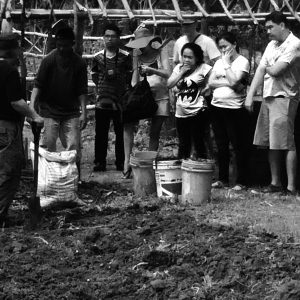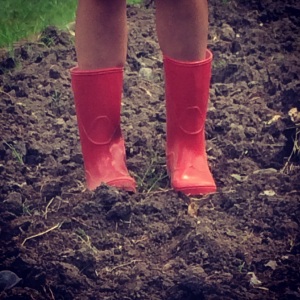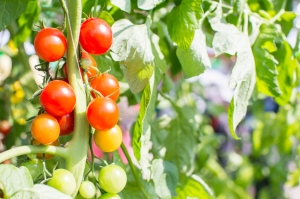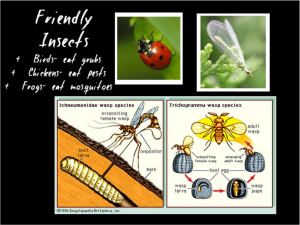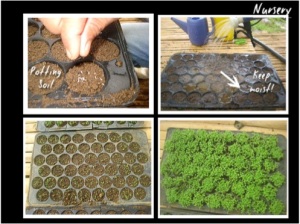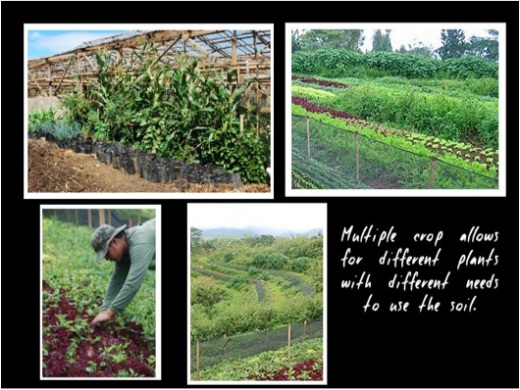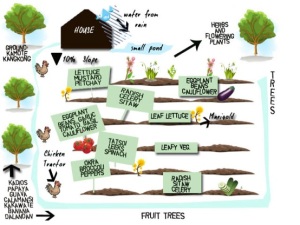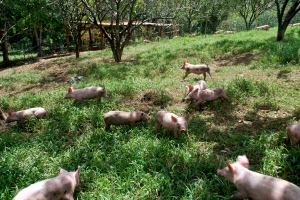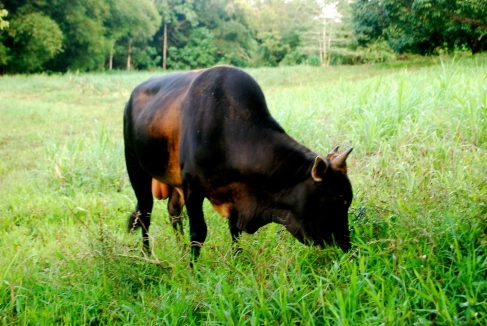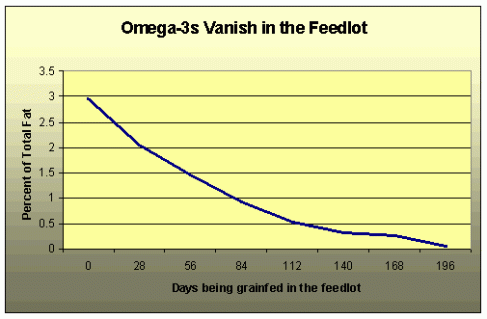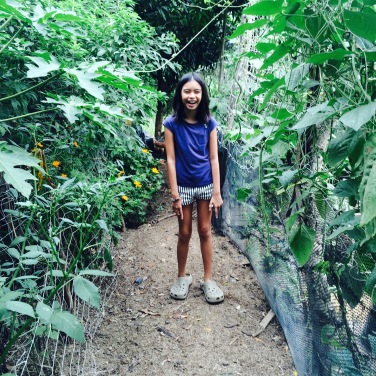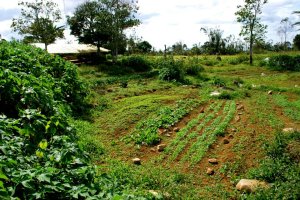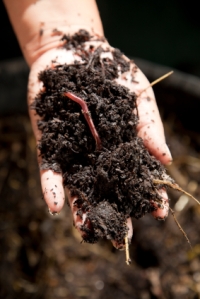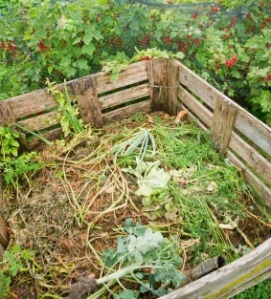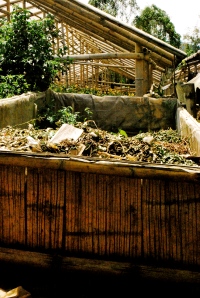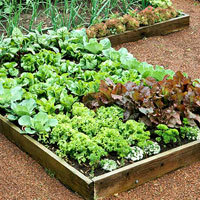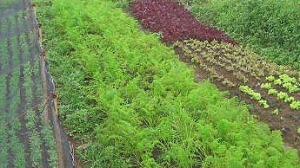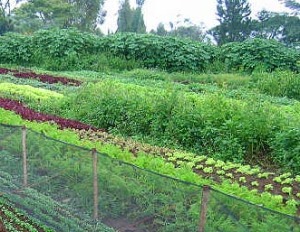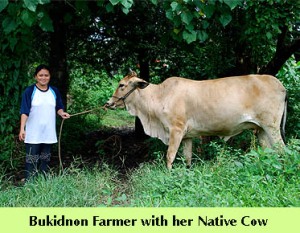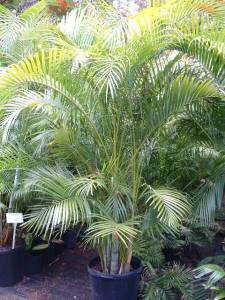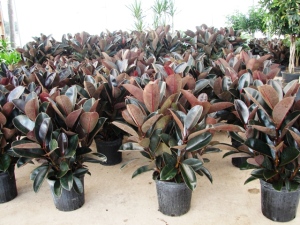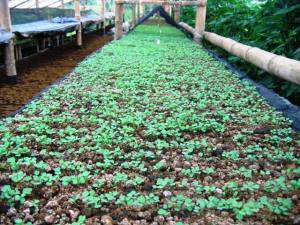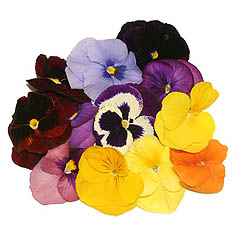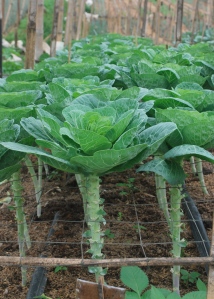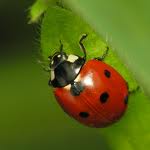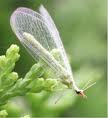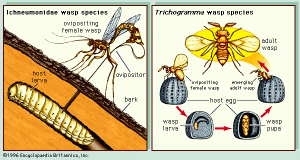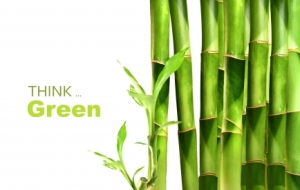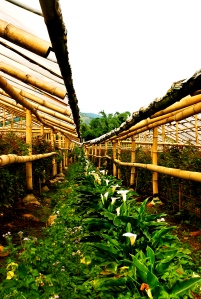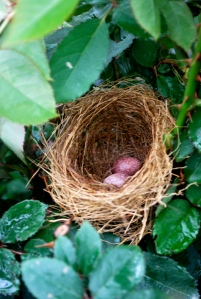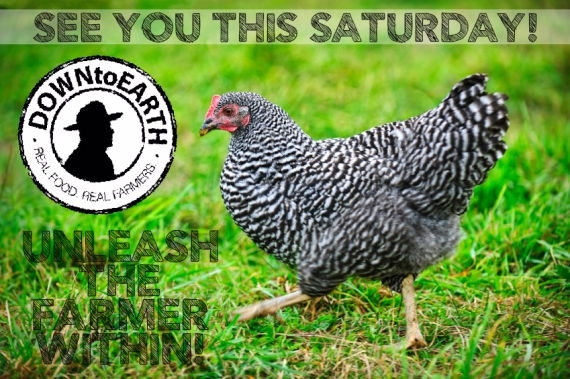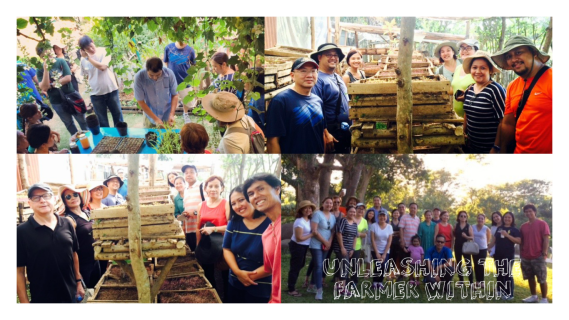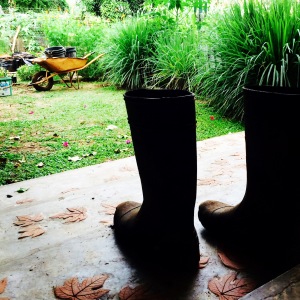We have lost 80 billion tons of carbon from our soils. The carbon lost is now hovering over our atmosphere and warming the planet. That may be why it barely rained in November, and why it feels like summer in February.
But there is hope according to some earth warriors, who are now practicing a system of agriculture that aims at putting carbon back into the soil- Regenerative Farming. Already, there are too many systems of sustainable farming; organic, permaculture, biodynamic, and agroecology. But soil farmers claim that regenerative farming trumps them all. What is this innovative method? And is it in fact, a reapplication of the ancient wisdom that the ground beneath our feet may just save the dying earth?
The IFOAM Regenerative Agriculture Course

Students from Chile, Japan, Germany, Taiwan, England, Ireland, Sweden & the Philippines.
Along with a small group of 10, I attended the IFOAM Organics Academy internship course in Somerset, England. We were farmers, students, entrepreneurs and educators, all eager to be fed the definition of Regenerative Agriculture. However, because it was a novel, innovative, and still budding system, we had to unearth it ourselves.
Healthy Soil, Healthy Plants
More than a hundred years of chemical farming have left us with depleted soils- compacted soils that can no longer capture or hold water. Farmlands are dug, tilled and plowed, removing all vegetation so another crop can be grown. What we are left with are barren lands starved of microorganisms and nutrients, and prone to wind and water erosion.
Enter Regenerative Agriculture. Regenerative farming seeks to build healthy, carbon-rich soil. Its focuses on soil life and soil health. Farmers feed the soil with compost, mulch, cover crop cocktails or green manure (legumes or some plants grown on the soil to feed soil life.) Beds or plots are not tilled or kept to a minimum. When land is not tilled, soil organisms are able to establish a healthy ecosystem. The practice has proven benefits such as increased nutrients and organic matter, soil fertility, fewer diseases, less erosion, more moisture and better soil aggregation. The carbon-rich humus also keeps excess carbon dioxide out of the atmosphere.
No Dig or No Till Farming
The Somerset region boasts a terrain of vast pastures dotted with grazing Herefords and Angus cows. At the time I visited, the weather was muggy and misty gray. We explored farms in rain boots and trudged through mud, puddles, even 2 inches of snow. I kept wondering, how does anyone grow anything here? What is regenerative farming for these farmlands when the land is waterlogged, and soils are mucky and cold?

The misty roads of Somerset
We spent time at the farm of Charles Dowding, Somerset’s No-Dig farming legend. In a 1000 square meter backyard, this farmer was harvesting 21 tons of produce, and as he proudly exclaimed, without weeds! The secret, he said, was in the soil. Weeds, according to Dowding, was just an agent of soil recovery.
“When soil is looked after, by leaving it undisturbed as much as possible, we reap the rewards of healthier crops, less weeds, better carbon conservation and good drainage.”
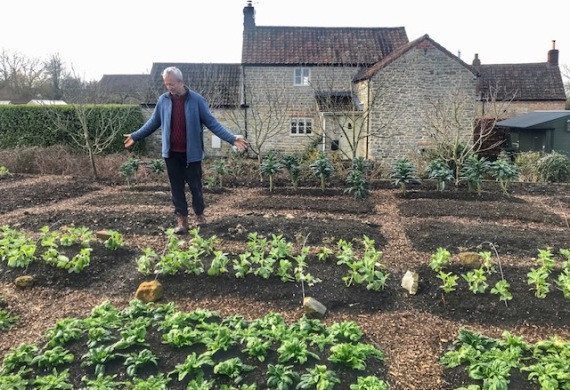
Charles Dowding’s No Dig Garden
Dowding improved the damp clay of Somerset by mulching and composting on raised beds. He applies as much as five inches of compost and wood chips per year for his beds. In the summer, when green grasses and legumes are abundant, Charles ensures that he has an abundance of brown wood chips or dry leaves, which he uses to make a compost cocktail. He does not use any other fertilizer but sprays with Biodynamic 500 horn manure preparation. He remarked: “If you disturb the soil, it has to recover, just like us!“ And so Dawding opts to let the soil be. No digging in this lush garden! So simple, and yet so much sense.

Feed the soil with compost and mulch. Allow every microbe, bacteria, worm and fungi some elbow room to thrive. Your beds will be teeming with life. The mulch acts as a coat of armour, protecting the soil from erosion, keeping the weeds from taking root and even providing food for the living organisms. Healthy living soil shall then feed plants with the nutrients they need. What you have are healthy plants, increasing yields, and subsequently, nutrient-rich food.
Charles also practices multiple cropping. A lush mixture of plants on the bed means a lush community of microbes beneath. If you grow only one crop, you promote pathogens specific to that variety. If you grow a multitude of crops, you allow diversity, and pathogens will not find a host in such array of plants.

Charles showed us how he sows salad greens in celled trays. He explains that how plants are harvested are crucial to the amount of food you can get. For example, for lettuces, Charles does not cut the whole plant to within an inch or two of the ground. Instead, he picks a few leaves from the outside of every plant. He then does the same only a few days later.

Nursery
He also told us that to sustain a small acreage, one must learn to be picky with crops. In his case, Charles only grows high value vegetables and crop varieties that can be cropped multiple times. In a bed, he is able to grow 100 kilos of produce, crops like onions, beets, carrots and Charlotte potatoes. Additionally, he practices multiple sowing, and will have lettuces, French beans and tomatoes in one bed. Charles usually maintains about 10 vegetables per cropping season.
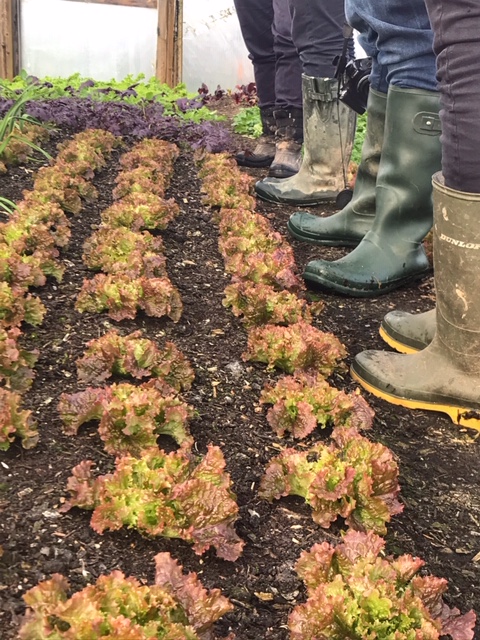
High Value Crops polytunnel
Managed Grazing
Another farm we visited was the 1000-acre Dursdale farm, where Hereford and Aberdeen Angus crosses were managed sustainably. The herd supplied the grass-fed meat of the farm’s restaurant. The farm carefully monitored grazing times and ensured that the cattle had a healthy fresh diet. They also raised chickens and sheep. For Dursdale, livestock was managed not only for food production but also to build soil health.
This is another feature of Regenerative Agriculture: the use of livestock to draw and store carbon. The practice is called mob grazing. Domestic animals are moved through a landscape mimicking ancient herds that in the past, helped build grasslands. Picture this. Ancient herds would forage in pastures. They would pack tightly together to protect themselves from predators. They graze over a small area, which are later filled with urine and dung. As they won’t feed on their own wastes, they would transfer instead of overgraze in the same patch of land. Their hooves break up the hard surface of the soil, trampling grasses and causing these plants to release carbon sugars into the soil. Add to that dung and urine, and you’ll have a healthy build-up of insects and microorganisms in no time. As they forage new areas, they would eat the most nutritious plants, and then move again leaving their hoofprints, dung and nitrogen-rich urine. This system of grazing enriches the land naturally. Their impact on the land restores a healthy soil micro-biome and creates carbon-rich soil.
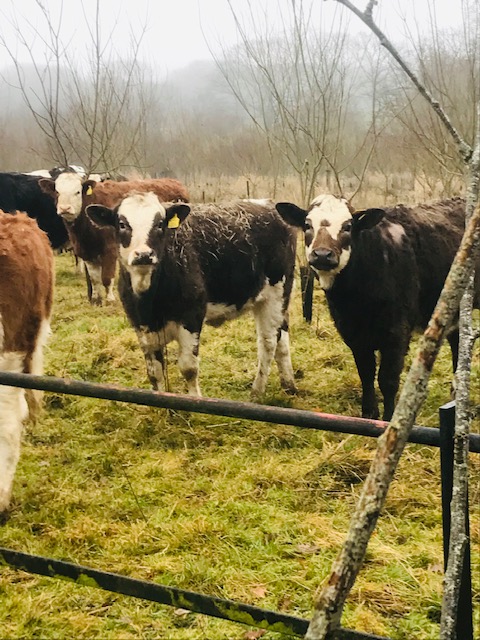
Holistic Grazing
Healthy Landscapes
We spent many days in the 42 Acres Retreat Farm, a landscape of permanent pasture, vegetable garden, woodlands, lakes and ponds. The owners hope to restore the health of the earth, so as to restore the health of those who walk on it. Recognising how human gut and earth gut are synonymous, their philosophy is:
The health of our soil, is the health of our self.
We were a lucky bunch feasting on fresh beets and salad greens, oats and nut milk, and just hatched duck eggs. My gut was delighted, having no processed food, soy or white sugar for days.

The hermitage sits on Oxford clay, a rich loamy and heavy clay soil. Hannah is the farm manager. She shared with us how she has in a year, learned to listen to the land, and be a doctor of soil health. Hannah occupies her time surveying and monitoring lumps of soil and brooding over ways of to manage the land while raising cows and ducks. The Retreat Farm has asked her to produce enough food to feed its guests. Its kitchen would like to whip up Soil to Gut food that is 80% percent sourced from just within 50 miles. For now, Hannah and Arek, the gardener, have managed to raise a few beds of organic vegetables using only open pollinated seeds. They also incorporate biodynamic preparations. They collect spring and rainwater, using as much as 80% of harvested water for the farm. Over 95% of the energy used and consumed is renewably-sourced. The farm also follows the no-dig system.

The Polytunnel and a tool used to loosen soil
Our hands held the wet and cold chunk of clay and wondered how anything can grow in this terrain and misty gray conditions. I gaped at the acres of pasture, the surrounding forest and thought about grass-fed cows and forest foraging. Hannah spoke about their land management plans. They hope to follow a system of holistic planned grazing for the 25 hectares of permanent pasture. Almost 80% of the animal feed is grown on-site. Holistic grazing looks at the grasses available and weighs it against the needs of the cattle. A third is grazed, another portion trampled, and another third left to fallow. Again, it follows mob grazing, mimicking the way that buffalos and grasslands evolved together. The business of the Farm Retreat as a haven of solitude limits how much Hannah can do for the farm. Hannah knows she has to balance the needs of the Retreat Farm with the gifts or challenges of the land.

Hannah, showing us the clay soil of 42Acres
Saving our Soils, Saving Ourselves
At the beginning of the IFOAM course, our teacher asked us why we took the course. My reply was; To regenerate myself. I looked at the breadth of the 42 Acre Retreat Farm and felt overwhelmed. How would I work this land so I can harvest a bounty from it, and yet, feed it back more than what I take? I looked at the breadth of the earth and felt engulfed by the immensity of its degradation, the loss of carbon, the quality of our food. How does one listen to the already exhausted earth? How do we remain stewards of the landscape, the animals, and yet also, stewards of ourselves? How do we work the land so that we harness the magical powers of the millions of microbes, fungi, roots and plants that can remove carbon dioxide from our atmosphere, convert it to plant material and organic matter for humus, and even bequeath us with good food?
We have tried countless times to address the food crisis, the global climate crisis, and have already designed, developed, standardised a great many systems (and words!) for it. It may be that Regenerative Farming is just another terminology, call it the true version of organic agriculture, the refinement for where organic agriculture went wrong. I have my hopes up. Because at last, healthy living soil is now included in our conversation about food production.

I felt the ground shift under my feet. The crisis is in our soil. And yet, our salvation may be in there too.
Even the broken letters of the heart, spell earth. -Daniel Thompson

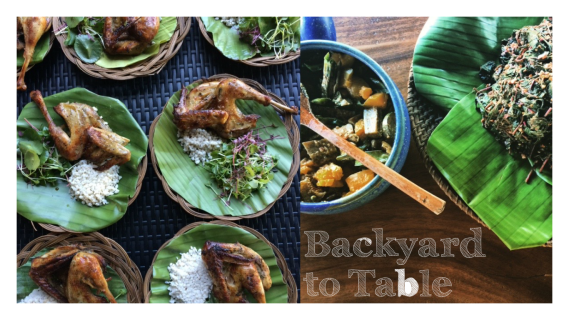

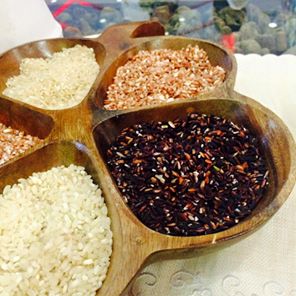
 and security. This ancient grain has been cultivated for centuries by the indigenous people of Mindanao- the Talaandigs and the Bagobos. Aptly named as Job’s Tears, the grains are tear-shaped, with a texture similar to risotto or quinoa. I munched my way through lunch with Adlai croquettes and had a bite too many of the Black Heritage pork belly over Adlai.
and security. This ancient grain has been cultivated for centuries by the indigenous people of Mindanao- the Talaandigs and the Bagobos. Aptly named as Job’s Tears, the grains are tear-shaped, with a texture similar to risotto or quinoa. I munched my way through lunch with Adlai croquettes and had a bite too many of the Black Heritage pork belly over Adlai.